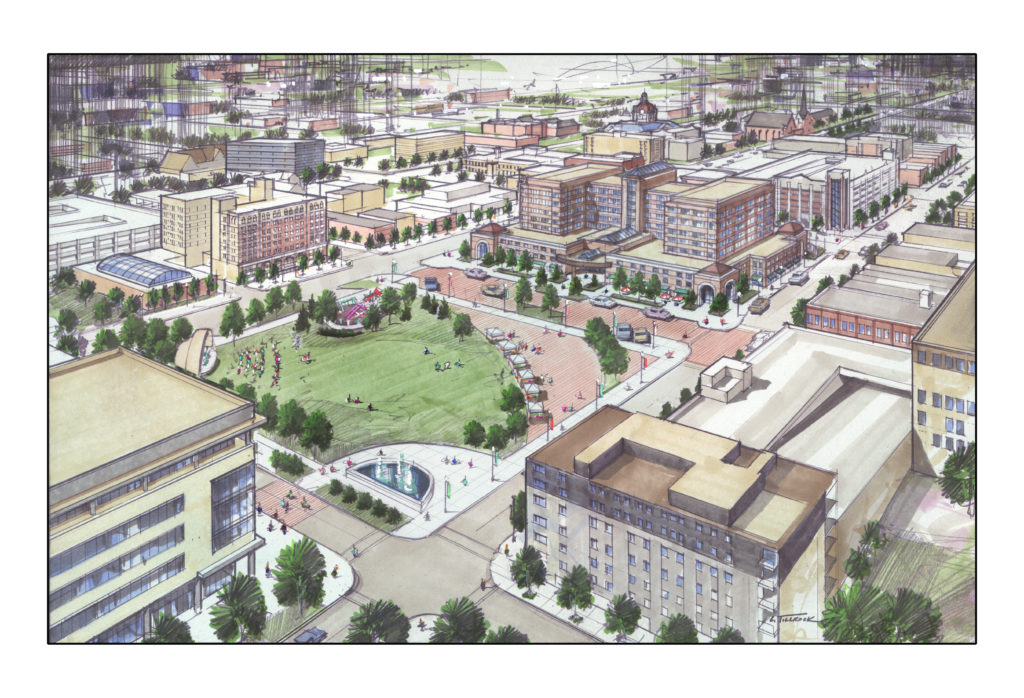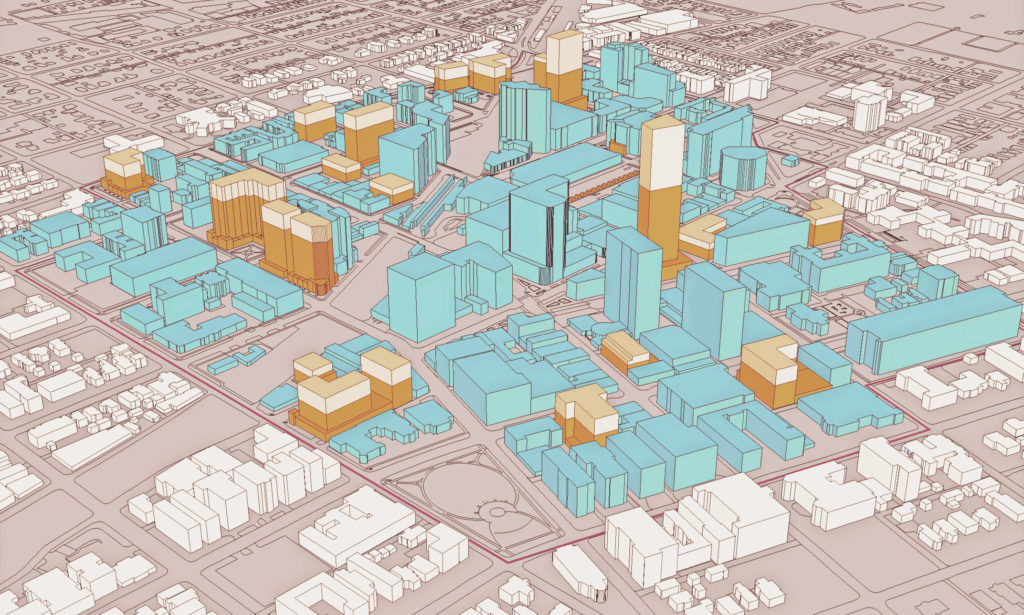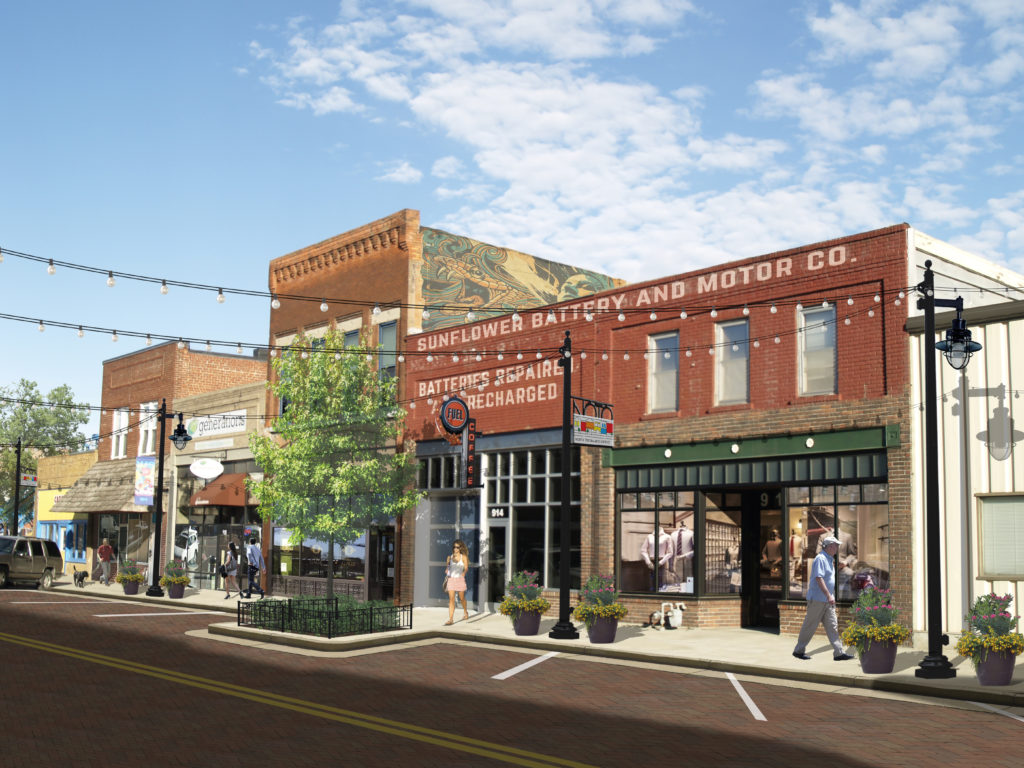By The Lakota Group | September 25, 2018
We’ve worked in downtowns across the country—large and small—to craft placemaking, transportation, and economic development strategies that provide both vibrant spaces for residents and destinations for visitors. Our downtown project experience includes design standards and form-based codes, public art and open space programming, streetscape planning and design, heritage tourism and Main Street planning, and signage and wayfinding design.
Here’s a list of a few of the downtown plans we have done over the past 25 years. Check out our projects page to learn more!
Downtown Implementation Plan (Mount Prospect, Illinois)
Coordinated and funded through the Regional Transportation Authority, The Lakota Group led a team to develop a Downtown Implementation Plan for Mount Prospect. The project encourages communities to create a transit-oriented development (TOD) plans to support and enhance existing and future transit, in addition to improving communities served by transit. The program allowed Mount Prospect to leverage its high commuter ridership of the Metra system to create a long-range vision for an improved downtown. The final plan addresses redevelopment, land use, public realm improvements, transportation enhancements, market recommendations, and a marketing strategy.
Downtown Master Plan (Green Bay, Wisconsin)
The Lakota Group led the process to develop a Downtown Master Plan for the City of Green Bay. The plan represents a consensus-based vision for the downtown that provides a realistic and achievable road map for the future. It addresses land-use, transportation, parking, and downtown character and aesthetics to achieve sustainable growth that is supported by the needs and desires of the greater Green Bay community. The planning process included a comprehensive approach to identifying and prioritizing downtown improvements with clear implementation strategies. A central tenant of Lakota’s approach was the direct involvement of a variety of area stakeholders including employees, visitors, business owners, and residents. The Green Bay Master Plan, AuthentiCity, won an award from the Wisconsin Chapter of the American Planning Association in 2015. Downtown Master Plan (Evanston, Illinois)
Downtown Master Plan (Evanston, Illinois)
Lakota and Duncan Associates co-led the team that prepared a downtown master plan, development guidelines, and a sample form-based code for the City of Evanston. Located adjacent to Northwestern University, the downtown plan addresses land use, building heights, massing and design, site planning, streetscape amenities, and open space. Lakota targeted key redevelopment sites and generated 3D models and sketches illustrating potential urban form for this dense, transit-oriented downtown. Additionally, a strong emphasis was placed on enhancing Evanston’s streets and public spaces as vital components to downtown’s appeal. The planning process included a week-long charrette in a downtown storefront, stakeholder focus groups, and numerous community workshops to engage the public.

Oregon Main Street Revitalization Services
The Lakota Group provided revitalization services to 11 communities participating in the Oregon Main Street Program—an economic development program for traditional commercial districts developed by the National Trust for Historic Preservation. Lakota’s services to the Oregon communities involved management consultations and intensive training in the Main Street Four-Point Approach®, an economic development tool used for revitalizing downtown districts by leveraging a community’s local assets. Specific recommendations for each community were provided in both a presentation and report to provide direction for each Main Street committee.
District Revitalization Plan (Topeka, Kansas)
In association with LaMotte West Consulting of Portland, Oregon, Lakota prepared a revitalization plan focused on placemaking and the arts for the North Topeka Arts District (NOTO), a compact traditional commercial district located north of the Kansas State Capitol and Downtown Topeka.

Village Center Master Plan (Wilmette, Illinois)
Lakota prepared a master plan for the improvement and development of Wilmette’s traditional downtown. In addition to adding more than 300 new housing units, the plan reorganized inefficient commercial buildings and framed key shopping streets with new infill development. It also recommended mixed-use development along Green Bay Road in order to transform the auto-oriented character of the roadway into a pedestrian-friendly shopping district. Other key elements included enhancing the central village green, adding a new “railwalk” along the tracks, and creating a large open space for community events.
